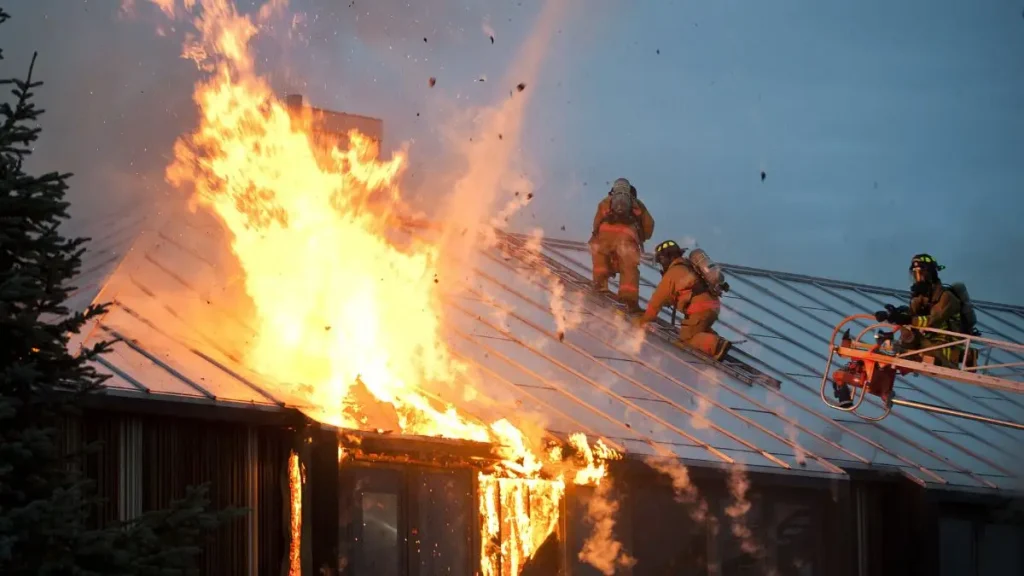Ohio Man Dies Heroically Trying to Save Dogs From House Fire
I still can’t get this story out of my head. Early Tuesday morning, a house fire broke out on West 59th Street and Denison Avenue in Cleveland, and a man lost his life trying to save his dogs. I read through the reports from the Cleveland Division of Fire, and what stands out is how quickly things escalated — the fire, driven by strong winds, overtook the home in minutes.
The heartbreaking part is that someone had already made it out safely. The man, in a split-second decision, ran back inside, determined to save his pets. He didn’t make it. His mother was hospitalized, and while his identity hasn’t been released, the tragedy is a stark reminder of how fragile life can be in a fire.
As I looked deeper, I noticed something that makes this story even more preventable: there were no working smoke detectors in the home. That detail, small as it might seem, can mean the difference between life and death. According to the American Red Cross, having functional smoke alarms cuts the risk of dying in a house fire in half.
Reading this, I couldn’t help but think: if you live with pets or have an older home, how prepared are you really? This incident is more than news — it’s a warning and a call to action.
The Cleveland House Fire Incident
I want you to picture this: it’s early Tuesday morning, and firefighters are called to a home on West 59th Street and Denison Avenue. According to a post from the Cleveland Division of Fire on X, one person escaped the fire, but another ran back inside — trying to save his dogs. That person was overcome by smoke and the heat from a wind-driven blaze.
#CLEFIRE companies responded to fatal house fire @ W.59/Denison at midnight. Call came from older adult resident who had escaped the fire. Another adult resident re-entered the house and was overcome by smoke/heat from wind-driven fire. @ClevelandEMS transported both to Metro. pic.twitter.com/oGzGprUJGO
— ClevelandFire (@ClevelandFire) November 11, 2025
The fire spread fast. Firefighters arrived quickly, but the combination of strong winds and no working smoke detectors made the situation deadly. It’s impossible not to feel the weight of that split-second decision. I keep thinking about how easily any of us could find ourselves in a similar scenario, especially if we have pets at home.
This section matters because it paints the full picture of what happened. If you understand how fast things went wrong here, you can start thinking about how to prepare yourself and your loved ones — including your pets — before it’s too late.
Victim Identity & Ongoing Investigation
CBS News reports that the man who lost his life hasn’t been named yet. His mother, who escaped first, was taken to a local hospital, and we’re still waiting to hear about her condition.
The cause of the fire is under investigation. While we may not know the specifics yet, this uncertainty reminds us how unpredictable fires can be. It also highlights the importance of early warning systems, like smoke detectors, that can buy you precious time when every second counts.
I’m including this section because readers need context — it’s not just about the tragedy, but about understanding the unknowns and risks, so you can act proactively in your own home.
Understanding the Risks: Smoke Detectors & Fire Statistics
Here’s the part that hits hard: there were no working smoke detectors in the home. That small device could have made all the difference. The American Red Cross says house fires kill seven people every day, but having functional smoke detectors cuts that risk in half.
They also recommend testing your smoke alarms monthly, and even offer free installations for homes that don’t have them. Thinking about it, I asked myself: have I checked mine recently? And you should, too. It’s one of those simple steps that can literally save lives.
Incidents like this remind me of past cases, such as when an East Louisville home caught fire and the resident was displaced but unharmed, showing how quickly fire can spread even in seemingly calm situations.
The Pet Rescue Factor: Risks of Re-Entering Fires

Let’s talk about why the man went back in. Pets are family, and our bond with them is powerful. I’ve felt that pull myself. But the truth is, re-entering a burning home is extremely risky.
Statistics and firefighter reports show that people often underestimate how quickly smoke and heat can overwhelm you. In this case, it cost him his life. I want every pet owner reading this to pause and think: do you have a plan? Are your pets trained or ready to escape safely if something happens? Carriers, leashes, pre-planned exits — these small steps can save everyone in the home.
If you want to stay updated on real-time home safety incidents and tips, you can join our home safety discussion on WhatsApp. It’s a handy way to see alerts and advice from other homeowners like you.
Lessons for Homeowners
Reading this story, I couldn’t help but jot down a mental checklist for my own home — and you should, too.
- Smoke detectors: Make sure they’re installed, tested monthly, and replaced as needed.
- Evacuation plans: Map out exits and practice drills, including your pets.
- Wind-driven fire awareness: Trees, debris, or nearby structures can feed flames quickly.
- Community resources: Programs like the American Red Cross can install alarms and provide guidance.
Similar situations have occurred before, like a Wisconsin home attic fire and a vacant Illinois home catching fire, highlighting the importance of fire preparedness regardless of your location or whether pets are involved.
Key Takeaways
When I read about this fire, a few things hit me hard — and I think they should hit you too. First, life can change in seconds. A split-second decision to go back inside for pets cost a man his life, and it’s a stark reminder that preparation is everything.
Second, smoke detectors are not optional. They literally cut your risk of dying in a house fire in half. I promise you, taking a few minutes to check yours, replace batteries, or even get a free installation can save lives.
Third, if you live with pets, think ahead. Plan exits, keep carriers handy, and practice evacuation. Your furry family members depend on you, but not at the cost of your life.
Finally, don’t wait for tragedy to strike to take action. Look around your home today: Are your alarms working? Do you have an evacuation plan? Have you included your pets? These are small steps with enormous impact.
I want to leave you with this question: If a fire started in your home right now, what’s your plan — for yourself and your pets? Take a minute to visualize it, and then act on it. Life is too precious to leave to chance
For more stories and tips on home fire safety, visit our Home Incidents section.
Disclaimer: The information in this article is based on available reports at the time of publication. Details may change as the investigation progresses. This content is for educational and safety purposes, not a substitute for professional advice.


